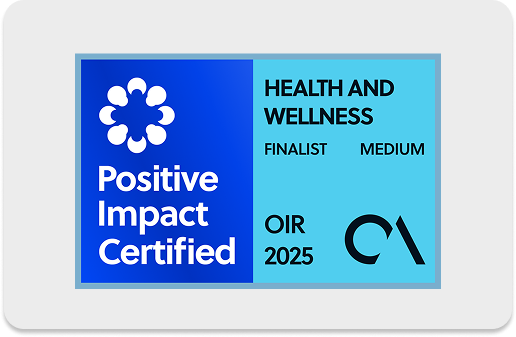A call center knowledge base is a centralized repository of information that empowers agents to resolve customer inquiries efficiently and consistently. As customer expectations grow, the absence of a well-structured knowledge base can lead to longer call times, inconsistent answers, and frustrated clients.
This article delves into the role of a knowledge base in modern customer support, outlining its benefits in streamlining operations and enhancing service quality.
We’ll explore what a call center knowledge base entails, provide a step-by-step guide to building one, and highlight essential software features to ensure your call center operates at its full potential.
What Is A Call Center Knowledge Base?
A call center knowledge base is a centralized repository of information that provides agents with the resources they need to resolve customer inquiries effectively.
It serves as a single source of truth, housing essential details such as product guides, troubleshooting steps, policies, and frequently asked questions. By offering quick and easy access to accurate information, a knowledge base ensures agents can deliver consistent support regardless of their experience or expertise.
The primary role of a knowledge base is to empower call center agents with accurate and up-to-date information to address customer issues swiftly. When agents have instant access to well-organized resources, they can confidently deliver solutions without unnecessary delays or miscommunication.
This consistency builds customer trust and enhances the overall experience, as clients receive the same level of support whether they contact the call center once or multiple times. Additionally, a knowledge base reduces the likelihood of errors or conflicting information, as all agents rely on the same vetted content.
How To Create An Effective Call Center Knowledge Base
Creating a highly effective call center knowledge base requires a structured and strategic approach. By following a step-by-step guide, organizations can develop a resource that empowers agents, enhances customer satisfaction, and supports overall operational goals.
Define Clear Objectives
Defining clear objectives is the cornerstone of building a successful knowledge base. Without a well-defined purpose, the knowledge base risks becoming a disorganized collection of information rather than a valuable tool for agents.
- Identify the Purpose: Start by pinpointing why the knowledge base is being created and the problems it is intended to solve. Common purposes include improving first call resolution rates, reducing average call handling times, and streamlining agent training.
For instance, if agents often struggle to find accurate information during customer interactions, the knowledge base should focus on delivering quick and reliable access to resources.
Similarly, if onboarding new agents is a challenge, the knowledge base can serve as a comprehensive training tool, reducing the time required for new hires to reach full productivity. - Set Measurable Goals: After defining its purpose, establish specific, measurable goals to track the knowledge base’s success. Examples include achieving a 20% reduction in average handling time within the first six months or increasing the number of resolved calls on the first attempt by 15%.
These metrics provide a clear benchmark for evaluating the effectiveness of the knowledge base over time. Additionally, they allow for adjustments and improvements based on performance data, ensuring the resource remains impactful. - Ensure Alignment with Organizational Objectives: To maximize its value, the knowledge base must align with the broader goals and strategies of the organization.
For example, if the company is focused on delivering exceptional customer experiences, the knowledge base should prioritize content that enables agents to provide consistent and high-quality support.
Likewise, for organizations aiming to expand into global markets, the knowledge base should include multilingual capabilities and address region-specific customer needs.
Alignment ensures that the knowledge base not only serves immediate operational needs but also contributes to long-term growth and success.
Identify Key Content Areas
The success of a call center knowledge base depends heavily on the quality and relevance of its content. To ensure the knowledge base serves both agents and customers effectively, identifying key content areas is essential.
- Determine Topics Based on Common Customer Questions and Agent Needs: Begin by identifying recurring questions and issues that agents encounter during customer interactions.
Focus on areas that consistently generate support requests, such as troubleshooting steps, product usage guides, and policy clarifications. By addressing these frequent topics, the knowledge base becomes a reliable go-to resource for resolving common challenges quickly.
- Collect Information from Support Tickets, Agent Feedback, and Customer Interactions: Utilize support tickets and customer service logs to extract valuable insights into the types of issues that need to be addressed.
Gather input from agents, who are on the front lines of customer interactions and can provide practical insights into the challenges they face.
Additionally, review customer feedback to uncover pain points and areas where information gaps may exist. These data sources help build a comprehensive knowledge base that reflects real-world needs.
- Prioritize Content That Addresses High-Impact or Frequently Encountered Issues: Not all issues have the same level of urgency or frequency. Prioritize content that has the most significant impact on operational efficiency and customer satisfaction.
For example, create detailed guides for resolving high-frequency issues that often delay resolution times. By focusing on high-impact topics, the knowledge base becomes a valuable asset for improving performance and customer experiences.
Choose The Right Knowledge Base Software
Selecting the right software platform is crucial for creating a functional and efficient knowledge base. The right tool can streamline content creation, enhance accessibility, and ensure the knowledge base meets organizational needs.
- Evaluate Software Options Based on Scalability, Integration, and Feature Set: When choosing a knowledge base platform, consider its ability to grow with your organization.
Scalability ensures that the platform can accommodate increasing content and user demands as the call center expands. Integration capabilities are equally critical, allowing the software to connect seamlessly with existing systems such as CRM tools and ticketing platforms
- Consider Tools with Advanced Search, User-Friendly Interfaces, and Customization Options: A robust search function is vital to ensure agents can quickly locate the information they need. Look for software with advanced search features like keyword matching, auto-suggestions, and filters.
A user-friendly interface reduces the learning curve and encourages frequent use. Additionally, customization options enable organizations to align the knowledge base with their branding and operational workflows.
- Opt for Solutions That Offer Robust Analytics and Reporting Features: Analytics are essential for tracking the performance of the knowledge base.
Choose a platform that provides detailed reporting on metrics such as article usage, search success rates, and user feedback. These insights allow continuous optimization of the knowledge base, ensuring it remains effective and aligned with user needs.
Organize And Structure Content Effectively
Effective organization and structure are the backbone of a functional call center knowledge base. When content is logically arranged, agents can navigate it quickly and locate the information they need without frustration.
- Create a Clear Hierarchy with Categories and Subcategories for Easy Navigation: Start by grouping similar topics into main categories and breaking them down into subcategories for more specific content.
For example, a main category like “Product Support” might include subcategories such as “Troubleshooting,” “User Guides,” and “FAQs.” This hierarchy ensures that content is logically grouped, making it easier for agents to find relevant information without unnecessary clicks.
- Use Consistent Formatting, Headings, and Internal Links for Logical Flow: Consistency in formatting enhances readability and usability. Use uniform headings, subheadings, and bullet points across all articles to maintain a professional appearance.
Internal links should connect related content, allowing agents to move seamlessly between articles. For instance, a troubleshooting guide might link to a related policy document or a step-by-step setup guide.
- Design an Intuitive Structure That Aligns with the Agent’s Workflow: Tailor the knowledge base to reflect how agents typically work. Place high-priority content, such as troubleshooting steps and FAQs, at the top of navigation menus or within easily accessible sections.
Organize articles in a way that mirrors the progression of a typical customer interaction, ensuring agents can follow a logical path to resolve queries efficiently.
Develop Clear And Concise Content
The clarity and simplicity of the content in a knowledge base are critical to its effectiveness. Complex or poorly written articles can hinder agents’ performance and increase resolution times.
- Write Content in Simple, Accessible Language to Ensure Easy Understanding: Avoid technical jargon or overly complex terminology that may confuse agents.
Use straightforward language that clearly explains concepts, even for less experienced team members. Break down complicated ideas into smaller, digestible parts, and include practical examples to illustrate key points.
- Include Visuals, Diagrams, or Videos to Clarify Complex Topics: Visual aids such as diagrams, screenshots, or instructional videos can make complicated processes easier to understand.
For instance, a step-by-step setup guide with annotated screenshots can reduce the time agents spend deciphering instructions. Videos can be particularly useful for demonstrating processes or walking agents through intricate workflows.
- Focus on Actionable, Step-by-Step Instructions for Resolving Issues: Structure articles so they provide direct, actionable guidance that agents can follow with ease.
Start with a clear overview of the issue, followed by sequential steps to resolve it. Each step should be concise, specific, and accompanied by any necessary warnings or tips to avoid common mistakes.
Implement Effective Search Functionality

An effective search functionality is the cornerstone of a call center knowledge base, enabling agents to retrieve the information they need quickly and efficiently. A robust search system minimizes delays and enhances productivity by putting critical answers at agents’ fingertips.
- Enable Keyword-Based Search to Streamline Information Retrieval: A keyword-based search system allows agents to enter relevant terms and find precise matches within the knowledge base.
To make this feature truly efficient, ensure that articles are indexed properly and contain keywords commonly used by agents and customers.
Additionally, focus on natural language processing capabilities, so the system understands queries phrased differently but with the same intent. This feature drastically reduces the time spent searching for information during customer interactions.
- Incorporate Filters, Auto-Suggestions, and Typo Handling for Improved User Experience: Enhance the search experience by integrating filters to narrow down results by categories such as topic, date, or relevance.
Auto-suggestions are another essential feature, providing real-time recommendations as users type, which helps guide them toward the most relevant content.
Include typo tolerance to handle spelling errors and ensure that agents receive results even if they make minor mistakes in their queries. These features collectively make the search system more intuitive and user-friendly.
- Test the Search Function with Real-World Queries to Ensure Reliability: Before launching the knowledge base, rigorously test its search functionality with actual queries that agents are likely to use.
Simulate different scenarios, such as ambiguous keywords or complex questions, to assess how well the system performs.
Collect feedback from beta users and make iterative improvements to enhance accuracy and speed. Reliable search functionality is critical for ensuring that the knowledge base fulfills its intended purpose.
Train Agents On Knowledge Base Utilization
Training is a vital step in ensuring that the knowledge base becomes an indispensable tool for agents. Proper training empowers agents to navigate the system confidently and maximize its potential for delivering outstanding customer support.
- Provide Comprehensive Training on How to Navigate and Use the Knowledge Base Effectively: Begin by conducting structured training sessions that walk agents through the knowledge base’s features and navigation.
Cover key aspects such as using the search function, locating content by categories, and understanding the format of articles. Provide practical demonstrations and give agents opportunities to explore the system during the sessions, helping them build familiarity.
- Conduct Workshops or Role-Playing Scenarios to Familiarize Agents with Its Content: Workshops and role-playing exercises allow agents to practice using the knowledge base in real-world scenarios.
For example, simulate customer interactions where agents must rely on the knowledge base to resolve queries. These activities help agents learn how to quickly locate information under time pressure, improving their confidence and efficiency in live situations.
- Highlight the Benefits of Using the Knowledge Base to Enhance Performance: Clearly communicate how the knowledge base improves their day-to-day work, such as reducing call handling times, minimizing errors, and enhancing the quality of customer interactions.
Emphasize that the knowledge base is not just a tool but a support system designed to make their roles easier and more rewarding.
Encourage Continuous Feedback And Collaboration

Creating a call center knowledge base is not a one-time effort. To ensure it remains effective and relevant, businesses must foster a culture of continuous feedback and collaboration.
- Create Channels for Agents to Provide Feedback on the Knowledge Base Content: Agents are the primary users of the knowledge base and can offer invaluable insights into its functionality and content.
Establish clear feedback channels, such as surveys, suggestion boxes, or dedicated discussion forums, where agents can share their observations and propose improvements.
Encourage agents to report outdated information, unclear instructions, or gaps in coverage to ensure the knowledge base evolves with their needs. - Encourage Cross-Departmental Collaboration to Improve Accuracy and Completeness of Information: Collaboration between departments—such as customer service, product development, and marketing — is essential to keep the knowledge base comprehensive and accurate.
For instance, the product team can provide detailed specifications and updates, while the marketing team can offer insights into customer behavior and pain points.
Regular inter-departmental meetings or collaborative tools can streamline this exchange of information, ensuring the knowledge base reflects the latest developments across the organization. - Implement Changes Based on Feedback to Maintain Relevance and Usability: Feedback is only valuable if it leads to actionable improvements. Assign a dedicated team or individual to evaluate feedback and prioritize updates to the knowledge base.
Implement changes promptly and communicate these updates to agents, so they are aware of the new resources available. Regular updates based on feedback demonstrate a commitment to making the knowledge base a dependable tool.
Regularly Update And Maintain Content
A knowledge base’s value depends on its accuracy and relevance. Regular maintenance ensures it continues to meet the demands of agents and customers effectively.
- Schedule Regular Reviews to Ensure All Information Remains Current: Establish a consistent review cycle, such as quarterly or bi-annually, to evaluate the content in the knowledge base.
During these reviews, verify that the information aligns with the latest product features, policies, and customer inquiries. Use analytics to identify frequently accessed articles and ensure they are prioritized for review.
- Remove Outdated Content and Update Articles Based on Product or Policy Changes: Outdated or incorrect information can lead to confusion and frustration for agents and customers alike.
Regularly audit the knowledge base to identify articles that are no longer relevant, such as those related to discontinued products or obsolete procedures. Update these articles with current information or remove them entirely to maintain the knowledge base’s credibility.
- Appoint a Dedicated Team or Individual to Oversee Content Management: Consistency and quality are best achieved when a specific person or team is responsible for managing the knowledge base.
This role involves coordinating updates, reviewing feedback, and ensuring the knowledge base aligns with organizational goals. Having dedicated oversight also ensures accountability and establishes a clear process for maintaining the resource over time.
Monitor Performance And Effectiveness
Monitoring the performance and effectiveness of a call center knowledge base is critical to ensuring it delivers consistent value. By leveraging data analytics and user feedback, businesses can identify areas for improvement and make informed adjustments to enhance the knowledge base’s efficiency.
- Use Analytics to Track Metrics Like Article Usage, Search Success Rates, and Resolution Time: Analytics provide actionable insights into how the knowledge base is being used. Metrics such as article usage reveal which content is most accessed by agents and customers, indicating its relevance and importance.
Search success rates highlight whether users can quickly find what they need, with low success rates pointing to gaps or unclear content.
Resolution time metrics help assess the knowledge base’s impact on operational efficiency, showing whether agents are resolving issues faster due to readily available resources. Regularly reviewing these metrics ensures that the knowledge base aligns with its intended goals.
- Identify Gaps in Content Based on User Behavior and Search Patterns: By analyzing search queries, businesses can pinpoint gaps in the knowledge base. For example, if users frequently search for terms that yield no results, it indicates missing content that should be prioritized.
Similarly, articles with high search traffic but low engagement may need updates to provide clearer or more detailed information. Reviewing user behavior helps ensure the knowledge base evolves to meet the actual needs of agents and customers.
- Adjust Strategies to Improve the Knowledge Base’s Impact on Call Center Efficiency: Use data-driven insights to refine strategies for content creation and organization. For instance, if agents struggle to locate critical articles, consider reorganizing categories or enhancing the search functionality.
Regularly update training materials to reflect changes in the knowledge base, ensuring agents remain confident in its use.
Additionally, set performance benchmarks for key metrics and continuously strive to meet or exceed them, keeping the knowledge base aligned with the organization’s efficiency goals.
5 Top Features To Look For In Call Center Knowledge Base Software
When selecting knowledge base software for a call center, it’s essential to focus on features that enhance accessibility, usability, and overall efficiency. These features should empower agents to provide faster, more accurate customer support while streamlining internal operations.
1. Advanced Search Functionality
Efficient search functionality is the backbone of any effective knowledge base software. It ensures that agents can quickly retrieve relevant information during customer interactions, minimizing downtime and improving service quality.
Advanced search functionality relies on smart keyword matching to deliver precise results. This feature enables agents to input simple terms or questions and receive relevant articles or resources instantly.
By aligning search results with commonly used phrases and industry-specific terminology, agents can locate the information they need without scrolling through unrelated content.
Features like auto-suggestions and typo tolerance take the search experience to the next level. Auto-suggestions provide real-time recommendations as agents type their queries, helping them refine their searches and find relevant content faster.
Typo tolerance ensures that minor spelling mistakes or incorrect phrasing do not hinder the search process. For example, if an agent searches for “password rest” instead of “password reset,” the software still delivers the correct results, improving efficiency and user satisfaction.
Advanced search functionality should also include filtering options and result ranking to ensure accuracy. Filters allow agents to narrow their searches by category, date, or topic, enabling them to pinpoint specific information quickly.
Ranking algorithms prioritize the most relevant articles based on the query, usage frequency, and feedback ratings, ensuring that agents can rely on high-quality resources during critical moments.
2. User-Friendly Interface
A user-friendly interface is a crucial feature of call center knowledge base software, ensuring that agents can navigate the system effortlessly and retrieve the information they need without delays.
A well-designed knowledge base should have a simple and logical layout, allowing users to locate content without extensive training.
Key functions, such as search bars, categories, and frequently accessed articles, should be prominently displayed. Intuitive navigation ensures that even new agents can quickly adapt to the system, boosting efficiency and minimizing onboarding time.
In today’s dynamic work environments, agents may access the knowledge base from various devices. The software should be responsive, ensuring a seamless experience on desktops, laptops, tablets, and smartphones.
This flexibility allows agents to access critical information wherever they are, whether working from a call center, remotely, or on the go.
A clear visual hierarchy guides users to the most important information quickly. Features like bold headers, categorized sections, and collapsible menus improve readability and usability.
Incorporating visual cues such as icons or color-coding can further simplify navigation, enabling agents to focus on resolving customer issues efficiently.
3. Content Management And Collaboration Tools
Content management and collaboration tools are essential for maintaining an up-to-date and accurate knowledge base. These features ensure the system remains dynamic and responsive to evolving business needs.
Real-time editing capabilities enable teams to make immediate updates to the knowledge base without downtime.
Version control ensures that all changes are tracked, making it easy to revert to previous versions if needed. This feature is particularly valuable for maintaining accuracy and consistency, especially in rapidly changing environments.
Collaboration tools allow multiple contributors to work on content simultaneously, fostering a team-oriented approach to building the knowledge base.
For instance, subject matter experts can provide detailed insights, while customer service teams add practical knowledge based on real-world interactions. This collective input results in a comprehensive and reliable resource.
An integrated approval workflow ensures that only vetted and accurate content is published in the knowledge base.
This process involves multiple checkpoints where drafts are reviewed and approved by designated team members or managers.
4. Customization And Branding Options
Customization and branding options are critical for creating a knowledge base that aligns seamlessly with the company’s identity and operational needs. These features ensure that the knowledge base feels integrated into the organization’s ecosystem.
A knowledge base should reflect the company’s unique branding, including its logo, color schemes, and font choices.
Customizing the interface reinforces brand identity and creates a cohesive experience for agents and customers. This professional presentation also builds trust, as it showcases a commitment to detail and alignment with the organization’s overall design standards.
Every organization has unique workflows and requirements. The ability to customize categories, tags, and content organization ensures that the knowledge base is intuitive and relevant to its users.
For example, a company specializing in technical support might prioritize categories such as “Troubleshooting” and “Setup Guides,” while a retail organization might focus on “Returns and Exchanges.” Tailored organization improves usability and ensures that agents can access relevant information quickly.
Integration with customer relationship management (CRM) systems enhances the usability of the knowledge base by providing agents with a unified platform.
When the knowledge base is embedded directly within the CRM interface, agents can access customer data and relevant articles simultaneously. This reduces the need to switch between systems, improving efficiency and ensuring a more streamlined workflow.
5. Analytics And Reporting
Analytics and reporting tools are indispensable for evaluating the performance of a knowledge base. They provide actionable insights that help businesses refine their content and enhance the overall effectiveness of the system.
Robust analytics tools allow administrators to track key metrics such as which articles are most accessed, how successful searches are, and the level of agent satisfaction with the knowledge base.
These insights reveal how the system is being used and whether it meets the needs of its users. By understanding these patterns, businesses can focus on optimizing content and functionality.
Analytics also identify gaps in the knowledge base by highlighting common search queries that yield no results or articles that receive poor feedback.
This information is invaluable for pinpointing where additional resources or updates are needed. For instance, if agents frequently search for a term with no corresponding article, it signals a content gap that should be addressed.
Data-driven insights enable businesses to make informed decisions about improving the knowledge base. Regularly reviewing performance metrics and user behavior ensures that updates are targeted and effective.
For example, underperforming articles can be revised for clarity, and frequently accessed content can be enhanced with visuals or additional details. This iterative process ensures that the knowledge base evolves to meet changing needs and maintains its value over time.
Conclusion About Knowledge Base For Call Center
A well-organized and efficient knowledge base for call centers is more than just a tool—it’s a strategic asset. It empowers agents to resolve queries quickly, consistently, and accurately, reducing response times and enhancing the overall customer experience.
By defining clear objectives, organizing content effectively, and leveraging the right software, you can build a knowledge base that truly supports your team. Regular updates, continuous feedback, and performance monitoring ensure it remains relevant and impactful.
When equipped with the right tools and practices, your call center can achieve faster resolutions, happier customers, and stronger operational efficiency.
Ready to take your customer service to the next level? At Gear Inc, we specialize in delivering tailored BPO solutions that align perfectly with your business needs. With over 6,000 dedicated professionals worldwide, we offer world-class services like live chat, technical support, and data entry to help you drive growth.
Contact Gear Inc today to build a seamless, high-performing customer support engine for your business. Let’s gear up for success together!
Frequently Asked Questions About Knowledge Base For Call Center
What Are The Key Differences Between An Internal Knowledge Base And A Customer-Facing Knowledge Base?
An internal knowledge base is designed specifically for call center agents and staff, providing detailed resources to resolve customer issues efficiently. It often includes troubleshooting guides, product details, and policies that may not be suitable for public access.
A customer-facing knowledge base, on the other hand, is meant for end-users, offering simplified answers to common questions and self-service options to reduce the need for direct support.
How Often Should A Call Center Knowledge Base Be Updated?
A call center knowledge base should be updated regularly, ideally whenever there are changes to products, services, or company policies.
Frequent reviews ensure the content remains accurate and relevant to both agents and customers. Incorporating feedback from users can also guide updates, ensuring the knowledge base addresses recurring issues effectively.
Are Knowledge Bases Suitable For Small Call Centers?
Yes, knowledge bases are highly beneficial for small call centers as they streamline operations and reduce the dependency on lengthy training sessions.
A well-organized knowledge base can help smaller teams handle customer queries more efficiently by providing quick access to necessary information. Additionally, scalable knowledge base platforms allow small call centers to start small and expand as their needs grow.
Can A Call Center Knowledge Base Integrate With Chatbots?
Yes, many modern knowledge base platforms offer seamless integration with chatbots to enhance automated customer support.
Chatbots can pull relevant articles or information from the knowledge base to answer common queries, reducing the workload on human agents. This integration not only speeds up response times but also ensures consistent and accurate answers across all customer interactions.



















